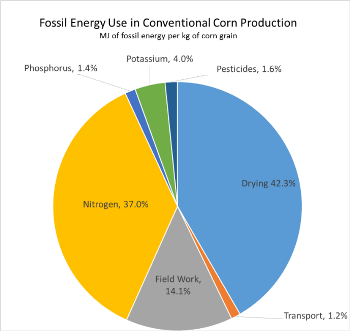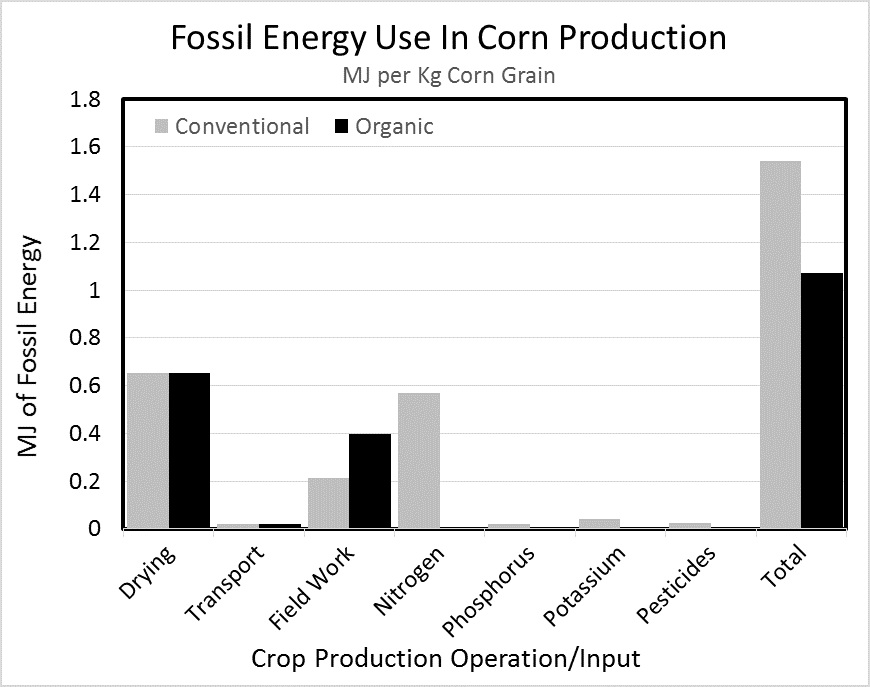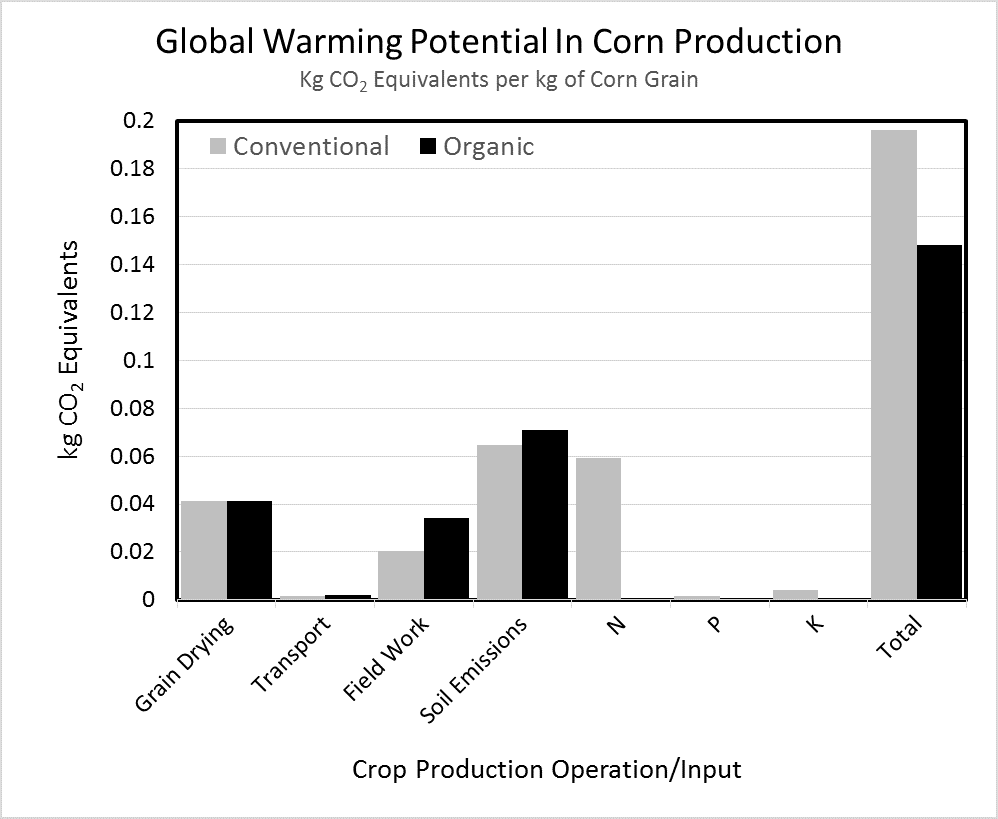By Joel Tallaksen, Renewable Energy Scientist

conventional corn production at the WCROC
Over the last three years, the West Central Research and Outreach Center (WCROC) has been working to assess the amount of fossil energy used in its agricultural operations and the amount of greenhouse gases emitted in those operations. Data has been collected in its dairy, swine, and cropping operations to analyze these impacts through its agricultural systems. This work is part of a large effort to identify areas in our farming systems where we can reduce fossil energy use and decrease greenhouse gas emissions. This includes efforts to add more efficient equipment, substitute renewable energy for fossil energy, and change agronomic practices.
Conducting life cycle assessments involves tracking the inputs and outputs of all the agricultural activities in an animal or crop system. By compiling data over several years, we can build a model to reflect the environmental impacts of the system. Our cropping system, corn production in particular, has been monitored through three growing seasons. A preliminary estimate of energy use and emissions has been developed for both conventional and organic corn production.

In terms of energy use, grain drying is the largest single use of energy in both corn cropping systems. Conventional corn (figures 1 & 2) indirectly uses a substantial amount of energy for nitrogen fertilizer production. In the organic system (figure 2), slightly more energy is used in field work due to the application of more bulky manures and added tillage to manage weeds. Overall, energy for nitrogen fertilizer production resulted in a greater fossil energy use in the conventional system than the organic system.
Global warming potential (GWP), a measurement of the greenhouse gases, tracks carbon dioxide and other greenhouse gases that are emitted during farming activities. As expected, the natural gas used in grain drying was the largest single component of conventional and organic corn production carbon dioxide emissions (Figure 3). Emissions from tractor fuel use in cropping operations for the organic system is higher than the conventional system. Nitrogen fertilizer, produced with natural gas, was a notable source of greenhouse gas emissions in the conventional system. Overall, conventional cropping systems had a higher GWP.

It is important to realize that the data behind these preliminary results is constantly being updated. In addition, these findings are a much simplified analysis of the cropping systems. A more accurate, long-term set of findings involves a more complex assessment that examines the conventional and organic cropping rotations as systems. For example, the organic rotation uses both cover crops and alfalfa to help build up soil quality and reduce weed pressure. A complete analysis of organic systems needs to evaluate corn production and its relationship to alfalfa and cover crops. It is likely that this analysis would increase both the energy requirements and GWP of organic cropping. Another factor that has not been directly addressed in these findings is the impact of cropping on soil carbon levels. In briefly reviewing the results from cropping system soil organic matter tests, there was not a drastic change, which suggests that soil carbon levels are not changing dramatically. However, a more in-depth review of soil carbon would enhance these findings.
As part of the ongoing LCA efforts at WCROC, these corn production results are being used in conjunction with other cropping data to help assess the life cycle of our animal production systems. Over the next few years, data from all these sources will continually be refined and the assessments updated to increase the accuracy of WCROC’s agricultural LCA models.
